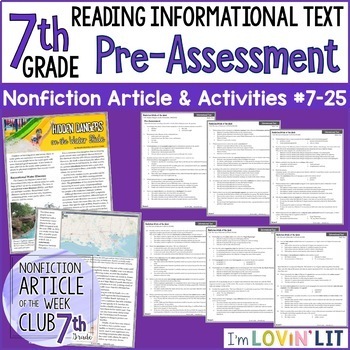- 8th Grade Current Event Articles
- 7th Grade Articles To Read
- 7th Grade Articles With Questions
- 7th Grade Science Current Events
- 7th Grade Science Articles


8th Grade Current Event Articles
To understand the United States of America, start with the Constitution. Written over 200 years ago, when the nation was first being established out of the 13 British colonies, this document is a blueprint. Its seven sections (or Articles) detail the core components of how the framers wanted the government to run the country. (See U.S. Constitution For Dummies Cheat Sheet.)
7th Grade Articles To Read

7th Grade Articles With Questions
Article I – The Legislative Branch. The principal mission of the legislative body is to make laws. It is split into two different chambers – the House of Representatives and the Senate. Congress is a legislative body that holds the power to draft and pass legislation, borrow money for the nation, declare war and raise a military. It also has the power to check and balance the other two federal branches.
Article II – The Executive Branch. This branch of the government manages the day-to-day operations of government through various federal departments and agencies, such as the Department of Treasury. At the head of this branch is the nationally elected President of the United States.
The president swears an oath to ‘faithfully execute’ the responsibilities as president and to ‘preserve, protect and defend the Constitution of the United States’. Its powers include making treaties with other nations, appointing federal judges, department heads and Ambassadors, and determining how to best run the country and run military operations.
Article III – The Judicial Branch. Article III outlines the powers of the federal court system. Determines that the court of last resort is the US Supreme Court and that the US Congress has the power to determine the size and scope of those courts below it. All judges are appointed for life unless they resign due to bad behaviour. Those facing charges are to be tried and judged by a jury of their peers.
Article IV – The States. This article defines the relationship between the states and the federal government. The federal government guarantees a republican form of government in each state, protects the nation and the people from foreign or domestic violence, and determines how new states can join the Union. It also suggests that all the states are equal to each other and should respect each other’s laws and the judicial decisions made by other state court systems.
Article V – Amendment. Future generations can amend the Constitution if the society so requires it. Both the states and Congress have the power to initiate the amendment process.
Article VI – Debts, Supremacy, Oaths. Article VI determines that the US Constitution, and all laws made from it are the ‘supreme Law of the Land’, and all officials, whether members of the state legislatures, Congress, judiciary or the Executive have to swear an oath to the Constitution.
Article VII – Ratification. This article details all those people who signed the Constitution, representing the original 13 states.

7th Grade Science Current Events

7th Grade Science Articles
Teacher sign up. How do you mummify a body? Analyzing the informative article on the seat of the American capital, will prove to be a valuable resource to help the students of Grade 7 in recognizing the difference between facts and opinions.
It provides nonviolent current news articles for my 7th grade students when doing their Current Events assignments of the Eastern Hemisphere countries. Nancy F., Traverse City, MI The students feel like they have a voice and what they say matters. 7th Grade Reading Passages. Below you'll find 7th grade reading comprehension passages along with questions and answers and related vocabulary activities. These printable worksheet activities include original excerpts from short stories and books as well as high-interest informational topics.
